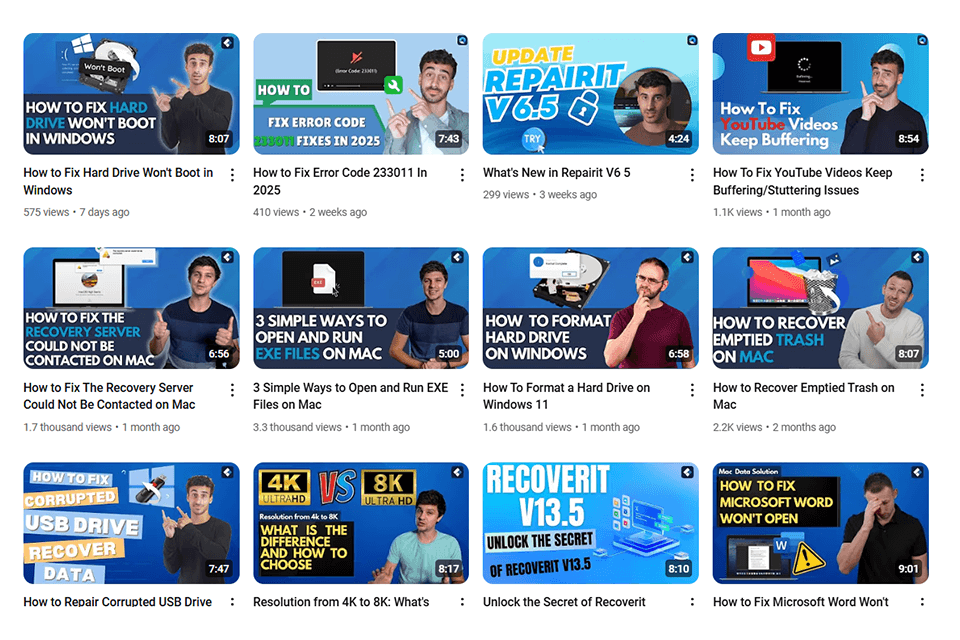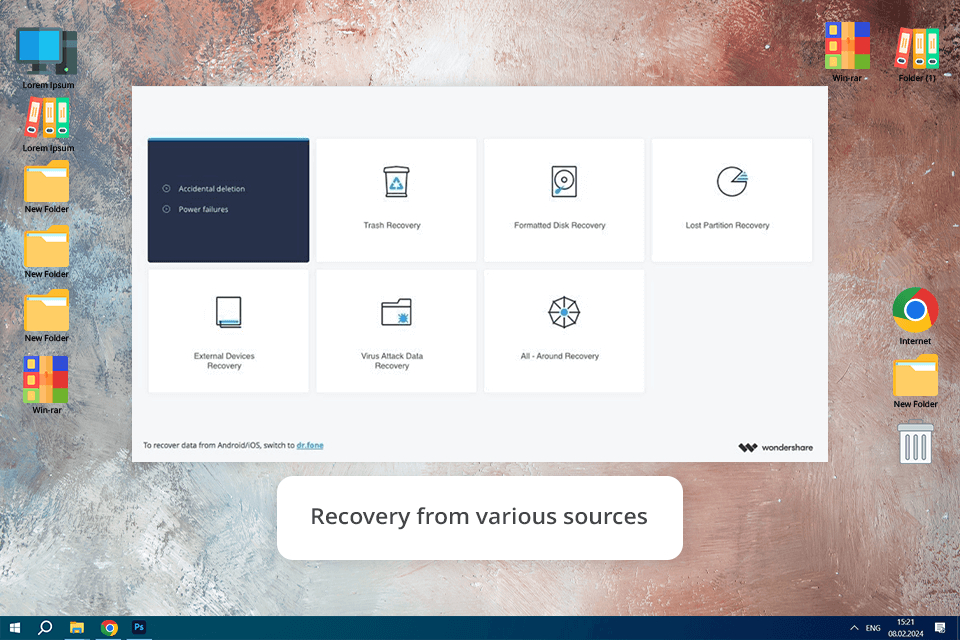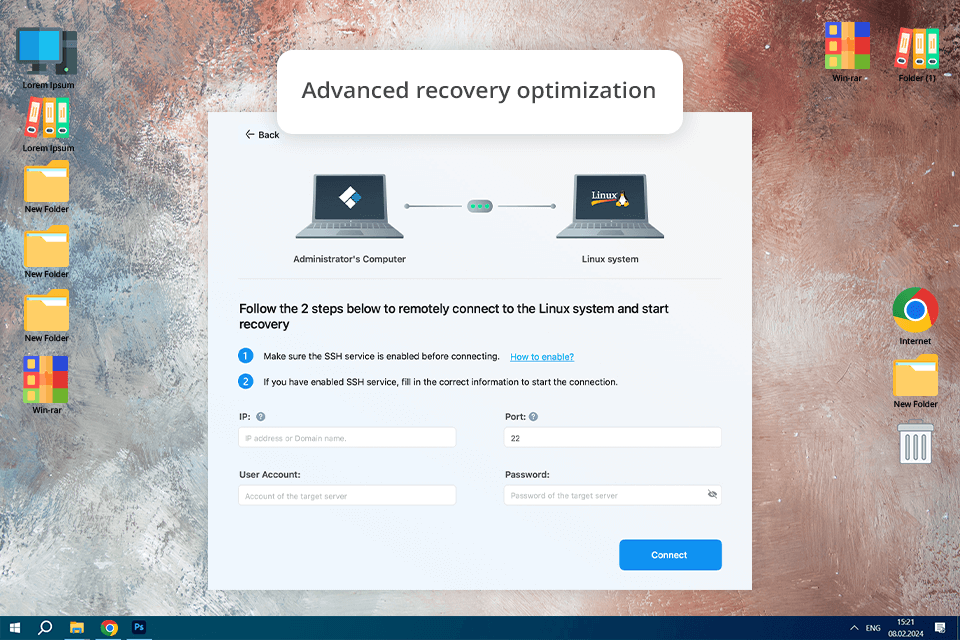Wondershare Data Recovery recently got its 6.6.1 version, which made the file restoration process even more user-friendly and quicker than ever. It comes with upgraded scanning, a more minimalist UI, and expanded format compatibility, allowing an even bigger range of people to recover their lost files.
Whether you got rid of a single crucial file by accident or an entire partition was corrupted, this edition will increase your chances of getting your data back with minimum effort.
Belonging to the FixThePhoto team, my coworker Julia and I decided to put Wondershare Data Recovery through a test and rate its performance. We experimented with a variety of file loss scenarios – unintendedly removing RAW photos, inadvertently formatting SD cards, and suffering from HDD/SDD corruption. We wanted to evaluate how efficient this software is at restoring important files and we were taken aback by the results.

When I was using the previous editions of Wondershare Data Recovery, I constantly had to deal with various restrictions despite being happy with its performance overall. The deep scanning took a lot of time, and high-res photos were often too corrupted to be recovered properly. Navigating the software also felt rather unintuitive. I was excited to check how many of those issues were fixed in the full version of Wondershare Data Recovery 6.0 and whether I can recommend it to fellow professionals.
|
File name:
|
data_recovery_mac.dmg (download)
|
|
File size:
|
1.3MB
|
|
File name:
|
data_recovery_wins.exe (download)
|
|
File size:
|
1.8MB
|
|
File name:
|
data_recovery_full.zip (download)
|
|
File size:
|
2.5MB
|
|
File name:
|
data_recovery_6.exe (download)
|
|
File size:
|
1.1MB
|


After using Wondershare Data Recovery for a while, I concluded that it’s a reliable solution for recovering lost data. That said, several aspects of this software could be enhanced. Even though these aren’t huge problems, addressing them could still go a long way to make the user experience more enjoyable.
After using Wondershare Data Recovery, I decided to check how it performs compared to various free alternatives. The market offers multiple free data recovery solutions, each with its own set of benefits and drawbacks, but none of them provides the same level of functionality and user-friendliness as the industry leader.
Recuva is among the most popular open-source data recovery software, as it has earned a reputation for doing a good job recovering recently lost data. That said, my test showed the inefficiency of its deep scanning system and issues when restoring RAW images in their original state. Meanwhile, Wondershare Data Recovery offers far superior results when tackling rarer formats, which is why it’s the recommended solution for photographers.
TestDisk is a free alternative that primarily serves as partition recovery software, which can also be applied to Wondershare’s tool. Even though TestDisk managed to recover my lost partitions, its UI is completely text-based, which can put off users who are used to more modern solutions. Wondershare’s straightforward navigation ensures you don’t have any issues tackling even the most complex restoration tasks.
PhotoRec, developed by the same company behind TestDisk, is mainly used for data recovery, but similar to the other tool, it doesn’t have a graphical interface. Even though it restored most of my photos, picking the ones I needed was very time-consuming because this software doesn’t have a preview feature. Meanwhile, Wondershare Data Recovery not only sorted the images but also let me preview them before choosing which ones to recover.
EaseUS Data Recovery Wizard is a contemporary solution that provides an intuitive UI and solid recovery results. That said, the free edition only allows you to recover 2GB of data, which isn’t nearly enough for professional photographers who lost a lot of images. Meanwhile, Wondershare Data Recovery delivers a more versatile approach while securing superior recovery results for bigger files.
Lastly, MiniTool Power Data Recovery has a free edition that allows performing basic file recovery, but its deep scanning is significantly slower than the one provided by Wondershare. I used both on an HDD, and MiniTool required a lot more time to finish the scan. If you value speed, Wondershare Data Recovery should definitely be higher on your list.